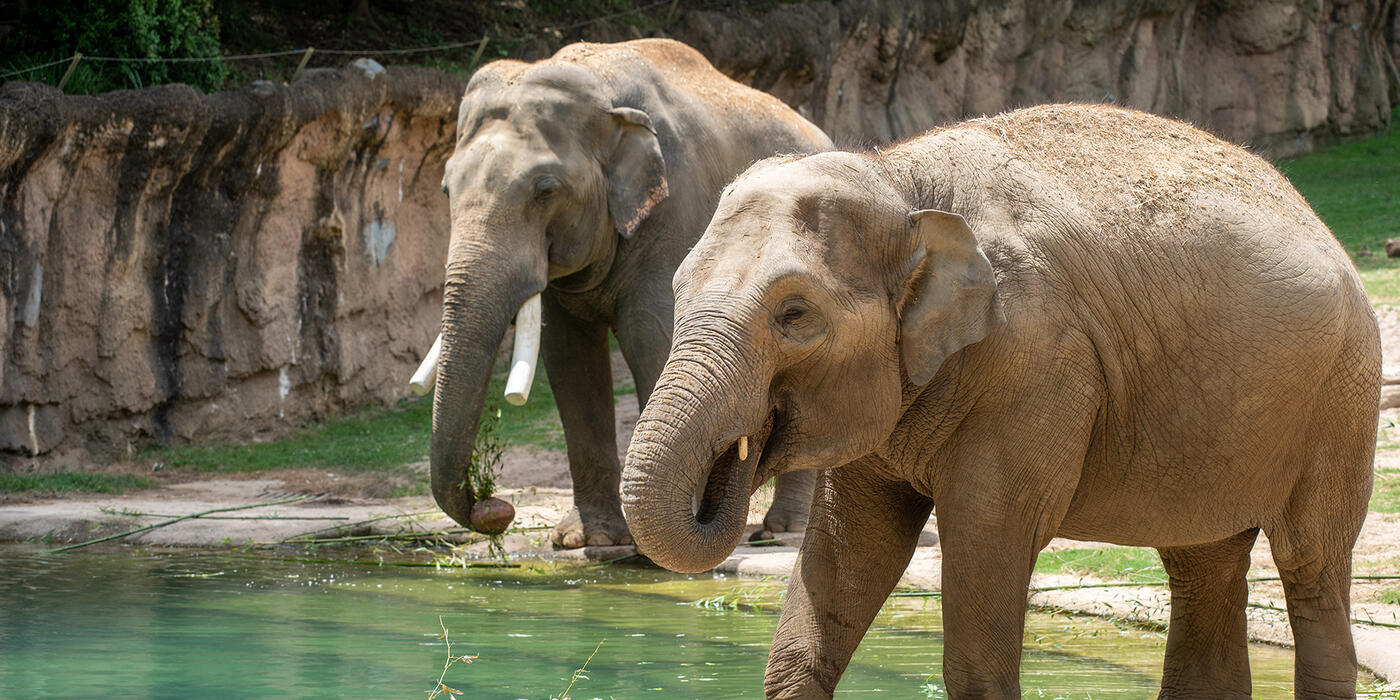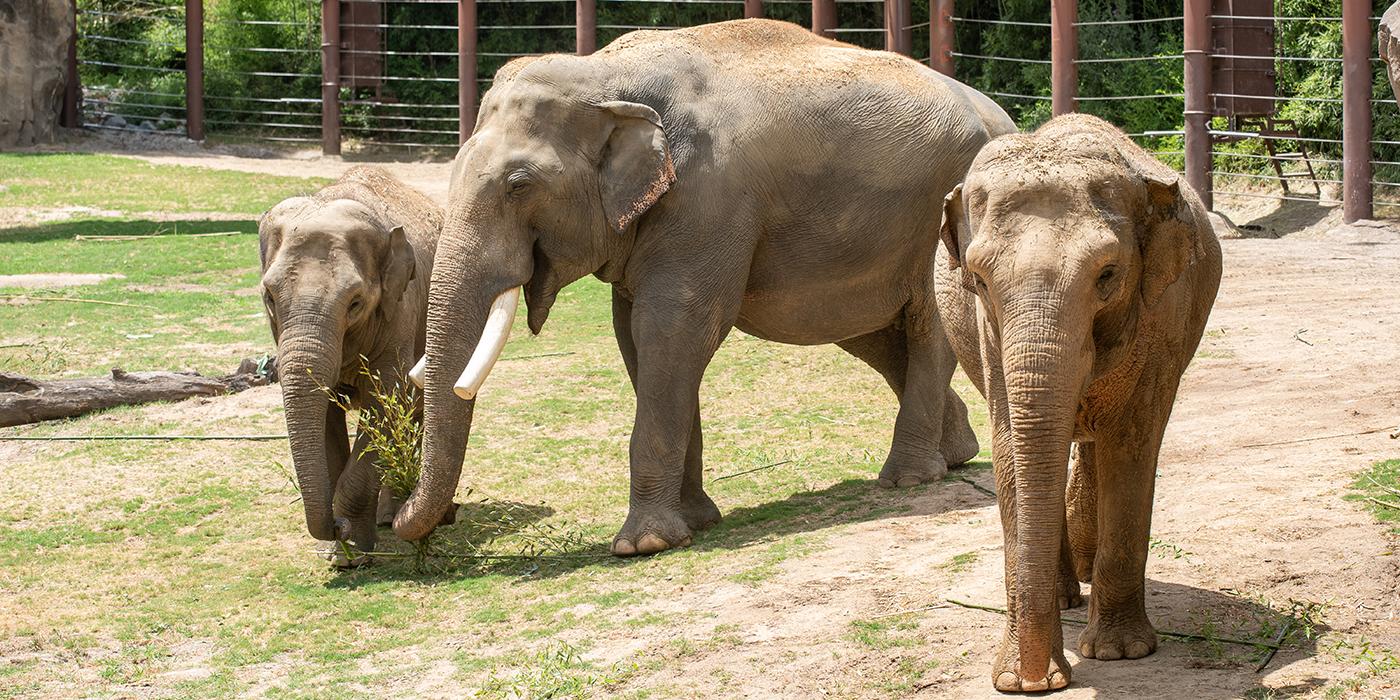Kandula's New Chapter: Q&A with Curator Tony Barthel
| Born: | November 25, 2001 |
| Sex: | Male |
| Weight: | Approximately 7,400 pounds. He weighed 324 pounds when he was born. |
| Name: | Kandula was named for the most famous elephant in Sri Lanka's history. The original Kandula was a gift to an infant prince 2,150 years ago. The future king and his elephant grew up together. The elephant was known for his courage, strength and loyalty. |
| History at the Zoo: |
Kandula is Shanthi's son and was born at the National Zoo. |
Why is Kandula leaving the Smithsonian’s National Zoo?
Male elephants become increasingly independent as they mature and separate from their natal group. They need to separate in order to find unrelated females with whom they can breed. Kandula has become increasingly independent as he has matured so now is the right time for him to be with females he is not related to. This move supports his natural development and his genes will contribute to the genetic diversity within the Association of Zoos and Aquariums (AZA) Asian Elephant population.
Kandula has spent his whole life at the National Zoo. Won't he miss his mom, Shanthi—and vice versa?
Now that he has matured, he is naturally more interested in finding other females than spending time with his mother. Shanthi has become accustomed to his independence and relies on the other females in her herd for companionship. It's hard to say whether or not they'll miss each other but we know from studies that this is a normal part of elephant life.
Where is Kandula going?
He will be going to the Oklahoma City Zoo.
How large (length, width, height, and weight) is the crate that will carry Kandula to his new home? How much does Kandula weigh?
The crate is about 17 feet long, 7 feet wide, and 9 feet 8 inches high. It weighs about 17,000 pounds. Kandula weighs 7,400 pounds.
Describe the process of acclimating Kandula to his crate?
The crate has now been installed in one of his outdoor yards. He will be allowed to look at, touch, and explore the crate initially. Our elephant team will then reinforce (through verbal commands and treats) walking through it and standing in it. Over time the team will increase the amount of time he comfortably spends in the crate, making it a fun and positive place for him. As he gets used to the crate, the team will begin moving doors and getting him used to being closed into the crate, and other aspects of the crate. Our team has expertise in moving elephants and have created a thoughtful plan based on Kandula's personality, safety and transportation logistics.
Will he be part of a breeding program?
Yes, which is vital to the conservation of Asian elephants.
Kandula will be 14 years old in November. At what age are male Asian elephants sexually mature?
Male elephants are capable of producing viable semen at a fairly young age but wouldn't typically get the opportunity to breed until they are much older. Kandula has produced viable semen for a number of years, but it could still be a few years before he actually breeds with a female elephant. The presence of other larger bulls, experiencing new females, and Kandula's social interactions with the females will all be a factor in determining when he first breeds.
How is Kandula getting to his new home?
He will travel in the crate on a truck.
Will any Smithsonian’s National Zoo staff accompany him on his journey?
Yes. The exact staff members have yet to be identified but he will travel with members of our elephant and veterinary teams.
Will anyone from his new zoo come to the National Zoo to observe training/animal care before Kandula leaves?
Some staff members from his new team will spend time with us to observe his training and care routines.
How long will Zoo staff stay with Kandula during his transition?
Our team will stay with him as long as is needed to get him settled in and used to the new staff and facility.
Will Kandula have companions at his new home?
Yes, Kandula will have companions and is joining another multigenerational herd.
Related Species:



